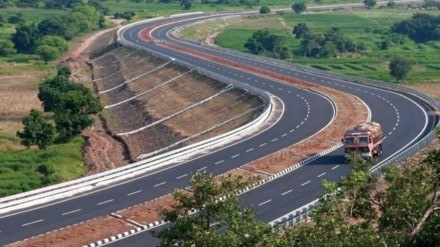By Rouhin Deb
India’s geopolitical ambitions are increasingly focused on positioning itself as a key player across the Indo-Pacific, and connectivity plays a central role in this. One of the most critical components in this framework is the India-Myanmar-Thailand Trilateral Highway (IMT-TH). This 1,360-km-long corridor which connects Kolkata to Bangkok, passing through the Northeast and Myanmar, is poised to become a vital transnational link between South and Southeast Asia. The highway is the final piece of New Delhi’s broader connectivity puzzle that seeks to create a seamless trade and infrastructure network, driving momentum from the Atlantic to the Pacific. The IMT-TH project, once completed, will be a crucial channel for business transactions and regional integration, especially for the Northeast.
From an economic standpoint, the Northeast gains immensely. Its economy has traditionally been dependent on agriculture and small-scale industries, with constrained access to larger markets. The IMT-TH opens direct trade routes to Thailand and Southeast Asia, offering new markets for the region’s agricultural products, textiles, and handicrafts. This could spur industrial advancements by attracting investments in sectors such as food processing, logistics, and tourism. The highway also holds the potential to address prolonged unrest in the Northeast, which has been a hotbed of insurgency due to ethnic tensions. Improved infrastructure and commercial opportunities could act as a deterrent to insurgent activities, while increased cross-border cooperation could help resolve long-standing conflicts.
Moreover, one of the most strategic aspects of the IMT channel is its role in counterbalancing China’s Belt and Road Initiative, considered a dominant force in the geopolitical landscape of Asia. By developing transnational infrastructure projects, China has sought to expand its influence across the region. However, the trilateral highway provides India with a more independent passage to Southeast Asia, mitigating its reliance on Chinese supply chains. With the IMT-TH, India can facilitate the movement of goods and services across Southeast Asia and into East Asia, reducing its dependence on commerce routes that pass through Chinese-dominated infrastructure. Furthermore, by strengthening ties with Myanmar and Thailand, India is building a coalition of like-minded nations that seek to maintain their sovereignty and independence in the face of China’s hegemony.
For India, the trilateral passage provides access to the fast-growing Association of Southeast Asian Nations (ASEAN) market, which represents over $3 trillion in GDP. Thailand, one of India’s major trading partners within ASEAN, saw bilateral trade reach $16.04 billion in 2023; India exported goods worth $5.92 billion and its imports were worth $10.11 billion. The highway can amplify these numbers, primarily by facilitating smoother access for Indian exports like pharmaceuticals, textiles, and automotive components into Southeast Asia’s high-demand markets.
Thailand’s role as a logistics hub is crucial for the project. By improving road connectivity, the IMT-TH will enable Indian exporters to reduce dependence on more expensive sea and air freight, making Indian products more competitive in Southeast Asia. Also, with the highway feeding into Thailand’s infrastructure including its Eastern Economic Corridor, Indian businesses can capitalise on Thailand’s advanced logistics systems to reach other ASEAN markets such as Cambodia, Laos, and Vietnam, and even China. Indian businesses, particularly those in sectors like electronics, could use Myanmar as a manufacturing hub given its lower labour costs, and transport finished products to Southeast Asia. The IMT-TH could thus promote the development of cross-border production networks, helping businesses optimise costs and production cycles across the three countries.
The IMT-TH is a critical element in India’s larger approach to leverage the Indo-Pacific as a gateway for financial partnerships. It allows India to bypass the Malacca Strait, one of the world’s busiest shipping lanes, where China holds significant influence and provides a direct overland route to Southeast Asia. This is especially important given that nearly 95% of India’s trade by volume relies on maritime channels, minimising vulnerability to disruptions at sea by creating an alternative land corridor. The IMT highway also aligns with India’s broader “Act East” policy. The increased connectivity will allow India to take part more actively in ASEAN-led initiatives such as the Regional Comprehensive Economic Partnership, which could further solidify India’s incorporation into global supply chains.
Recent developments add significance to India’s geopolitical strategy. Just ahead of the BRICS summit in Russia, India and China reached an agreement on patrolling arrangements along the Line of Actual Control, resolving some of the issues that arose in 2020. While the US views India as critical in countering China’s influence in the Indo-Pacific, particularly through initiatives like the Quad and joint projects such as the semiconductor fab and Predator drone deal, the India-China thaw could complicate matters for Washington. Although India remains committed to its Indo-Pacific agenda, closer ties with China could reshape the dynamics of its role in the region.
There is also growing speculation about a possible Russia-China-India alignment. This is evident in the reports about the three nations planning to collaborate on a joint lunar project, marking the first such initiative among them. While this collaboration remains largely symbolic, it signals India’s ability to navigate competing alliances, enhancing its strategic autonomy. In the context of the IMT-TH, India’s balanced diplomacy ensures that the highway would not only boost economic integration but also reinforce India’s independent role in shaping the geopolitics of Southeast Asia.
Co-authored with Harsh Kumar Jha, a student of political science and international relations at Ashoka University.
The author is the chief economist, Chief Minister’s Secretariat, Government of Assam.
Disclaimer: Views expressed are personal and do not reflect the official position or policy of FinancialExpress.com. Reproducing this content without permission is prohibited.
